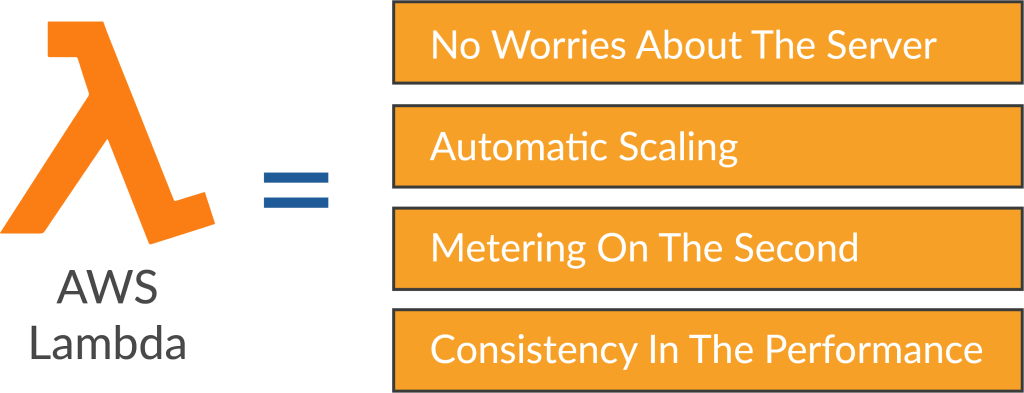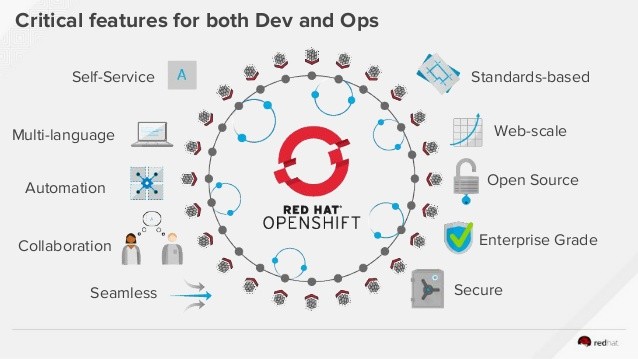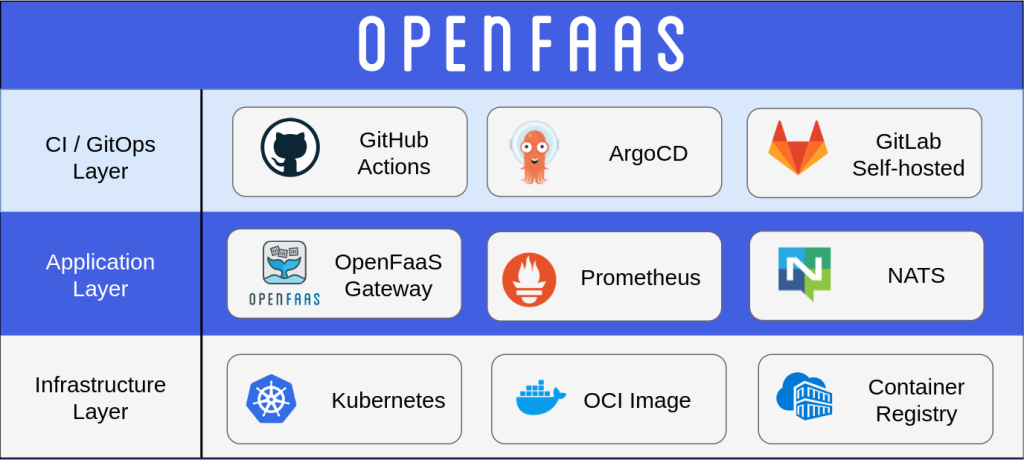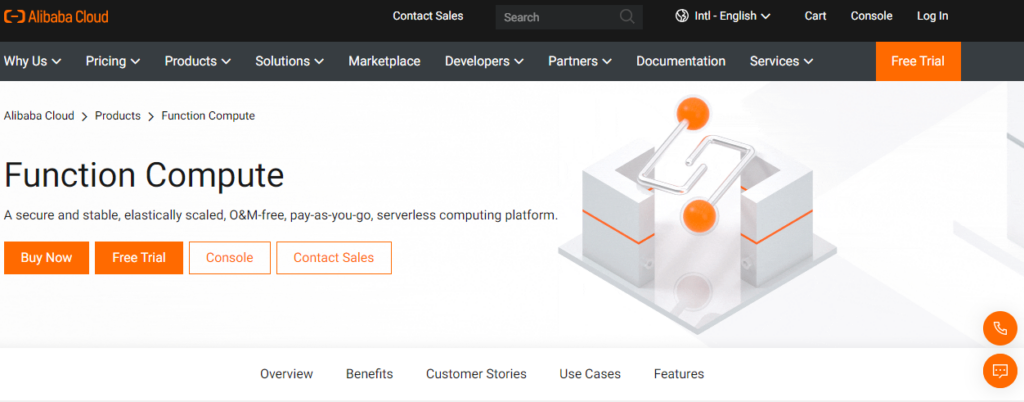Google Cloud Platform (GCP) offers a serverless container platform called Google Cloud Run. You could execute containerized applications in a fully controlled, auto-scaling environment. However, the market for cloud computing is continuously changing, and Cloud Run has several rivals and options, each with a unique set of capabilities and advantages. Google Cloud Run introduces the concept of bringing serverless capabilities to containers. This means that Google Cloud Run is a fully managed platform designed to execute Docker container images as stateless HTTP services.
Each container can be triggered by making an HTTP request, and all the intricate tasks related to handling the infrastructure – such as setting it up, adjusting its size, configuring it, and overseeing its operations – are taken care of behind the scenes, just as you’d expect with typical serverless computing. Google Cloud Run is constructed on top of the Knative platform, which is an open API and runtime environment created to develop, deploy, and manage serverless workloads. Knative is built upon Kubernetes, extending its capabilities to make it more user-friendly for serverless computing applications.
In the following section, we’ll delve into more technical aspects, exploring the features and prerequisites of Google Cloud Run Alternatives. Here are some Cloud Run substitutes:
Table of Contents
AWS Lambda
AWS Lambda is a serverless computing platform that allows you to run code without provisioning or managing servers. It is similar to Cloud Run in that it is event-driven and scales automatically. However, Lambda is not limited to running containers, and can also run code written in other languages, such as Python and Java. AWS Lambda is a serverless computing service that operates on events, allowing you to execute code for a wide range of applications and backend services without the need to set up or handle servers. You can initiate Lambda functions through more than 200 AWS services and various software-as-a-service (SaaS) applications, and you’re only charged for the computing resources you consume.

The serverless compute service AWS Lambda executes your code in response to events and manages the underlying compute resources for you automatically. These can be updates or status changes, like when a customer adds something to their shopping cart on an e-commerce website. You can build your backend services that function at AWS scale, performance, and security, or you can use AWS Lambda to augment existing AWS services with custom functionality. In reaction to a variety of events, such as HTTP requests made through Amazon API Gateway, alterations made to objects in Amazon Simple Storage Service (Amazon S3) buckets, table updates in Amazon DynamoDB, and state changes in AWS Step Functions, AWS Lambda automatically executes code. Lambda executes your code on high-availability compute infrastructure and handles all compute resource administration. This covers patch deployment, capacity provisioning, automatic scaling, code monitoring and logging, and server and operating system maintenance. You only need to provide the code.
Features
AWS Services can be Expanded with Custom Logic
You can simply apply computation to data as it enters or moves across the cloud with the help of AWS Lambda, which enables you to add custom logic to AWS resources like Amazon S3 buckets and Amazon DynamoDB tables.
With AWS Lambda, getting started is simple. By uploading your code (or generating it directly in the Lambda console) and selecting the memory, timeout duration, and AWS Identity and Access Management (IAM) role, you first establish your function. The AWS resource to use to activate the function is then specified; this could be a specific Amazon S3 bucket, Amazon DynamoDB table, or Amazon Kinesis stream. Lambda will execute your function when the resource changes, launching and managing the computing resources as necessary to keep up with incoming requests.
Create Unique Backend Services
With the help of the Lambda application programming interface (API) or unique API endpoints created with Amazon API Gateway, you may utilize AWS Lambda to develop new backend application services that are activated on demand. Instead of handling custom events on the client, Lambda handles them, which helps you avoid client platform variances, save battery life, and facilitate easier updates.
Provide your coding
There are no new programming languages, tools, or frameworks to learn when using AWS Lambda. Any third-party library, including native ones, may be used. You can manage and share any code (including frameworks, SDKs, libraries, and more) simply across numerous functions by packaging it as a Lambda Layer. In addition to natively supporting Java, Go, PowerShell, Node.js, C#, Python, and Ruby code, Lambda offers a Runtime API that enables you to write your functions in any other programming language.
Full Automation of Administration
You can concentrate on creating unique backend services since AWS Lambda takes care of managing the infrastructure needed to run your code on highly available, fault-tolerant infrastructure. With Lambda, you never have to worry about scaling or adding more servers as your demand increases or updating the underlying operating system (OS) when a patch is issued. Your code is automatically deployed by AWS Lambda, which also manages all administration, maintenance, and security fixes. Amazon CloudWatch also offers built-in logging and monitoring capabilities.
Red Hat OpenShift
A reliable hybrid cloud platform for developing and scaling containerized applications is Red Hat OpenShift Container Platform. Thousands of clients across many sectors rely on Red Hat OpenShift to provide business-critical applications, whether they’re moving current workloads to the cloud or creating brand-new customer experiences. Red Hat, one of the principal developers of Kubernetes, is also in support of it. Regardless of the architecture—public cloud, on-premises, hybrid cloud, or edge—OpenShift offers a consistent user experience.

Features
The Capacity
Red Hat OpenShift-based applications can grow to thousands of instances over hundreds of nodes in a matter of seconds.
Flexibility
Red Hat OpenShift makes it easier to create and maintain a hybrid infrastructure and gives you the choice of a self-managed or fully managed service that can operate on-premises, in the cloud, or in a hybrid environment. Your business may also use committed funds for Amazon Web Services or Microsoft Azure to purchase Red Hat goods and services. To maximize your investment in Microsoft Azure, partnering with azure consultants can provide specialized expertise and guidance, ensuring that your cloud strategy is optimally aligned with your business needs.
Open Source
Along with other open-source technologies, Red Hat OpenShift uses Open Container Initiative (OCI) containers and Cloud Native Computing Foundation-approved Kubernetes for container orchestration.
Container Portability
Between developer workstations and Red Hat OpenShift production systems, portability is ensured by container images created by the OCI industry standard.
Enhanced Developer Experience
Red Hat OpenShift offers an extensive selection of developer tools, support for multiple languages, command line connectors, and IDE integrations. Features include service mesh, serverless functionality, monitoring and logging capabilities, and continuous integration/continuous delivery (CI/CD) pipelines based on Tekton and third-party CI/CD systems.
Automated Installation and Upgrades
Automated installation and over-the-air platform upgrades are supported on-premises with vSphere, Red Hat OpenStack® Platform, Red Hat Virtualization, or bare metal, as well as in the cloud with Amazon Web Services, Google Cloud Platform, IBM Cloud, and Microsoft Azure. OperatorHub’s services can be fully deployed and upgraded with a single click.
Advanced Security and Compliance
Access controls, networking, and an enterprise registry with a built-in scanner are just a few of the fundamental security features that Red Hat OpenShift provides. This is improved by security features like runtime threat detection, full life cycle vulnerability management, and risk profiling offered by Red Hat Advanced Cluster Security for Kubernetes.
Azure Functions
Azure Functions is another serverless computing platform that is similar to AWS Lambda and Google Cloud Run. It allows you to run code without provisioning or managing servers, and it is also event-driven and scales automatically.

Features
Azure Functions is available as a pay-as-you-go service. Only what the user uses can be charged. The cost for Azure services is determined by the number of monthly executions. The pricing section above includes information on the cost structure of Azure Functions.
Supports a variety of Languages
Major programming languages including Python, C#, F#, and Java are supported by Azure Function. For additional information on the languages that Azure Functions supports, see above.
Easy Integration with Other Azure Services
The other Azure Services, such as the Azure Service Bus, Event Hubs, Event Grids, Notification Hubs, and others, may be seamlessly linked with Azure Functions without any effort.
Trigger-based executions
Based on the set triggers, Azure Functions are run. It supports a variety of triggers, including event hub, queue, and HTTP triggers. Because it is a trigger-based service, it operates as needed. To learn more about the available triggers, see the Trigger section above.
Heroku
Heroku is a platform as a service (PaaS) that makes it easy to deploy and scale web applications. It is not a serverless platform, but it does offer several features that make it a good alternative to Cloud Run, such as automatic scaling and managed databases. Heroku is a platform as a service for deploying and operating contemporary apps that are based on a managed container architecture, have integrated data services, and have a robust ecosystem. The Heroku developer experience is a software delivery strategy that is app-centric and integrated with the most widely used developer tools and workflows right now.

Features
Heroku Runtime
Your programs are run by Heroku inside intelligent containers called dynos in a dependable, fully managed runtime environment. To create an app that is ready for use, developers submit their Node, Ruby, Java, PHP, Python, Go, Scala, or Clojure code to a build system. It is always ready and up-to-date since the system and language stacks are watched over, patched, and upgraded. Apps are automatically kept running by the runtime.
Heroku Developer Experience
The Heroku Developer Experience is an app-centric method of software delivery that frees developers from having to worry about infrastructure or servers while they work on developing and delivering applications. Popular tools like Git, GitHub, or Continuous Integration (CI) systems are directly used by developers to deliver software. The user-friendly web-based Heroku Dashboard makes it simple to manage your app and get better performance insight.
Data Services and Ecosystem
Developers may customize their application stack with Buildpacks, extend their apps with Add-ons, and kickstart their projects with Buttons using Heroku Elements. Using add-ons, and third-party cloud services, developers can quickly add a variety of features to their apps, including data stores, logging, monitoring, and more. Heroku offers Heroku Postgres, Heroku Data for Redis, and Apache Kafka on Heroku as three fully managed data service Add-ons.
Heroku Operational Experience
A vital part of the platform is the Heroku Operational Experience. It enables developers to quickly spot and solve negative trends in the health of their applications by diagnosing and resolving common problems and customizing their ops experience. Heroku offers a collection of tools to notify you if something goes wrong or to scale your web dynos automatically if the response time for web requests goes beyond a predetermined threshold. You get free access to several features, including autoscaling, threshold alerting, and application metrics.
Security and Compliance
Heroku is entrusted with protecting sensitive data by developers from throughout the world, and upholding our custodial obligations to do so is of utmost importance to us. To further increase our clients’ trust in us, Heroku conducts audits regularly and upholds compliance with PCI, HIPAA, ISO, and SOC standards. Visit our compliance center to learn more.
Firebase
Firebase is a mobile platform that offers several services for developing and deploying mobile apps, including a serverless compute platform called Firebase Functions. Firebase Functions is similar to Cloud Run in that it is event-driven and scales automatically, but it is also integrated with other Firebase services, such as Firebase Realtime Database and Firebase Cloud Storage.

Features
Audience Segmentation
Based on device data, custom events, or user attributes, you can locate custom audiences in the Firebase console. Then, when targeting new features or notifications, you may leverage these audiences that you defined with additional Firebase variables.
Integration with Other Services
You can combine Firebase with additional services like Big Query, Firebase Notifications, Firebase Remote Configuration, Firebase CrashReporting, and Google Tag Manager that can use your business apps.
OpenFaaS
OpenFaaS is an open-source serverless framework that can be deployed on any cloud platform. It is similar to Cloud Run in that it allows you to run containers without provisioning or managing servers, but it offers a wider range of features, such as support for multiple programming languages and event sources. The best alternative for you will depend on your specific needs and requirements. Consider factors such as the programming language you want to use, the type of events you want to handle, and the amount of control you need over your infrastructure. Here is a table that summarizes the key features of each of the alternatives:

Features
- Portable functions platform – run functions on any cloud or on-premises without fear of lock-in
- Write functions in any language and package them in Docker/OCI-format containers
- Easy to use – built-in UI, powerful CLI and one-click installation
- Scale as you go – handle spikes in traffic, and scale down when idle
- OpenFaaS Pro for commercial use and production
- Community Edition – explore functions, or build a PoC without any cost
Oracle Cloud Functions
Oracle Cloud Functions stands as a robust serverless computing service within the Oracle Cloud ecosystem. Tailored for developers, it empowers them to focus solely on building, deploying, and scaling applications without the burdensome task of managing underlying infrastructure. This serverless platform is designed to deliver efficiency and flexibility, enabling developers to execute code in response to events without the need for server provisioning or maintenance.

Features:
- Automatic scaling based on demand.
- Support for multiple programming languages.
- Event-driven architecture with native integration to Oracle Cloud services.
- Granular billing for precise resource usage tracking.
Alibaba Cloud Function Compute
Alibaba Cloud Function Compute stands out as a fully managed serverless computing service within the Alibaba Cloud ecosystem. Engineered with developers in mind, it liberates them from the complexities of server provisioning and management, enabling a streamlined development process. This serverless platform empowers developers to execute code in the form of functions without the need to worry about infrastructure, allowing them to focus on crafting efficient and scalable applications.

Features
- Automatic scaling to handle varying workloads.
- Multi-language support for function development.
- Seamless integration with Alibaba Cloud services.
- Pay-as-you-go pricing for cost-effective usage.
Red Hat OpenShift Serverless
Red Hat OpenShift Serverless is an advanced, fully managed platform that seamlessly integrates serverless computing capabilities into the robust OpenShift container platform. Tailored for developers and enterprises, this Kubernetes-based solution empowers users to effortlessly build, deploy, and scale containerized applications. By extending the power of OpenShift, it introduces serverless architecture to enhance the efficiency and scalability of modern application development and deployment.

Features
- Automatic scaling and efficient resource utilization.
- Comprehensive support for containerized applications.
- Native integration with Red Hat OpenShift and Kubernetes.
- Centralized management of serverless functions and traditional applications.
Kubeless
Kubeless stands as a versatile and open-source serverless framework, uniquely crafted atop the Kubernetes container orchestration platform. Targeted at developers, it introduces the ability to deploy and execute functions seamlessly within a Kubernetes cluster. This innovative framework offers a bridge between the simplicity of serverless computing and the flexibility and control provided by Kubernetes, empowering developers to harness the benefits of both paradigms in a unified environment.

Features
- Serverless architecture on Kubernetes for container orchestration.
- Multi-language support for function development.
- Seamless integration with Kubernetes ecosystem.
- An event-driven model with support for various triggers.
Platform9
Platform9 stands out as a comprehensive managed Kubernetes service that seamlessly incorporates a serverless framework, providing organizations with a unified solution for deploying, managing, and scaling containerized applications and serverless functions. Engineered for simplicity and flexibility, Platform9 streamlines the complexities associated with Kubernetes and serverless computing, offering users a powerful yet user-friendly environment to build and operate modern, cloud-native applications.

Features:
- Serverless capabilities on Kubernetes infrastructure.
- Multi-language support for function development.
- Integration with Kubernetes ecosystem and tools.
- Centralized management of serverless functions and containerized applications.
The table below highlights important features of CloudRun Alternatives
| Feature | Google Cloud Run | AWS Lambda | Azure Functions | Heroku | Firebase Functions | OpenFaaS |
| Programming languages supported | Docker images | Python, Java, Go, Node.js, C#, Ruby, PHP | avaScript, Python, Java, C#, Go | Node.js, Python, Ruby, Java, Go | JavaScript, Python, Go | Multiple |
| Event sources | HTTP requests, Pub/Sub messages, Cloud Storage events | HTTP requests, CloudWatch events, Kinesis events | HTTP requests, Azure Event Hubs events, Service Bus events | HTTP requests, webhooks, database events | HTTP requests, Firebase Cloud Messaging events | Multiple |
| Scaling | Automatic | Automatic | Automatic | Automatic | Automatic | Automatic |
| Managed services | None | None | None | Databases, storage, queues, and other services | Databases, storage, and other services | None |
| Cost | Pay per request | Pay per request | Pay per request | Pay per dyno | Pay per request | Pay per invocation |
FAQs – Google Cloud Run Alternatives
What are Google Cloud Run Alternatives?
Google Cloud Run Alternatives refer to alternative platforms or services that provide serverless or containerized deployment options similar to Google Cloud Run. These alternatives offer different features and capabilities to cater to diverse application deployment needs.
What features should I look for in a Google Cloud Run Alternative?
Key features to consider include automatic scaling, support for multiple programming languages, ease of integration with other services, flexibility in resource management, and cost-effectiveness. Additionally, check if the alternative aligns with your specific use case and development preferences.
Do these alternatives provide multi-language support?
Yes, many alternatives offer multi-language support, allowing developers to write functions in their preferred programming language. This flexibility promotes inclusivity and facilitates integration with diverse codebases.
Can I find alternatives that integrate seamlessly with specific cloud ecosystems?
Yes, several alternatives, like AWS Lambda with Amazon Web Services and Azure Functions with Microsoft Azure, are designed to seamlessly integrate with their respective cloud ecosystems. This integration simplifies the development process by leveraging additional cloud services.
Are there alternatives that support containerized deployment?
Yes, alternatives like Red Hat OpenShift Serverless and Kubeless are built on container orchestration platforms like Kubernetes, offering a serverless framework for containerized deployment. This provides additional flexibility for organizations accustomed to container-based architectures.
Conclusion
The landscape of Google Cloud Run Alternatives is marked by innovation and diversity, providing developers and organizations with the flexibility to adopt solutions that best align with their goals and preferences. As technology evolves, the ecosystem of alternatives continues to grow, ensuring that users can find the optimal platform to propel their applications into the future of cloud-native computing.
Choosing the right alternative necessitates careful consideration of factors such as programming language support, ease of integration with existing cloud ecosystems, and the nuances of pricing models. The vibrant community support, extensive documentation, and trial options also play pivotal roles in the decision-making process.



